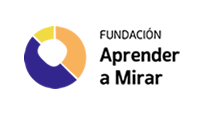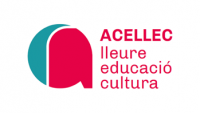AI and Child Sexual Abuse report 2024
The Internet Watch Foundation has updated its Artificial Intelligence and the Production of Child Sexual Abuse Imagery report, originally published in 2023. The danger continues to grow, with increasingly disturbing images. The update coincides with a report on TV3 News (Catalunya) about this threat, featuring the participation of Dr. Irene Montiel and Dr. Noemí Pereda, Children's Rights Network collaborators, of which PDA Bullying is a part.
Child sexual abuse imagery created wholly or partially using Artificial Intelligence (AI) are beginning to include scenes of rape and torture.
Moreover, the victims depicted are real and the criminals who create and distribute these images add their faces or likenesses. In some cases, they use the faces of famous children (which they insert, for example, into pornographic content) or even of known sexual abuse victims.
This concerning situation was reported in the updated 2023 report from the Internet Watch Foundation (IWF). This research team warns of the rapid growth of the problem, which is now reaching not only the dark web but also commercial sites.
To produce the report, one of these "dark websites" was studied; it contained around 20,000 AI-generated child sexual abuse images, with an additional 3,500 added this year.
An increasingly high percentage of these images fall into what is known as "Category A," which includes hardcore scenarios such as rape, torture, and murder.
On Sunday, August 18, Catalan public television aired a report based on this updated information during the evening news. It highlighted that the creation of such images, produced by the victims themselves, has increased by 14% since 2022, according to the IWF.
Additionally, most of the victims are not teenagers but rather children aged between 7 and 13 years old. The cause is a combination of the hypersexualization of social media and processes of extortion, coercion or manipulation carried out by sexual predators through the Internet.
As explained in the report, one of the methods used is gaining access to victims through video game chats, posing as other children. Predators offer the victims rewards within the games, such as virtual "coins" that allow them to access paid content in exchange for their sexual images.
Dr. Irene Montiel, a professor of Criminology and Cybercrime at UOC and a collaborator on the Manifesto against Child Sexual Violence, of which PDA Bullying is a part, explains in the report that victims are also targeted through social media.
These platforms are actually designed to achieve more "success" the more "hypersexualized" the images are, Montiel says. "There are many ads aimed at capturing young girls in particular, teaching them how the images should look, how the photos should be, the poses, what they should do, how to do it to get more subscribers to their channel... They are true child sexual exploitation mafias."
In the same report, Dr. Noemí Pereda, a professor of Victimology at UB and also a collaborator on the Manifesto, warns that once the abuse is committed, the images become eternal, making it very difficult to end their consequences and heal the wounds.
"We are not very clear about the long-term consequences because this is a problem we are currently facing, but there are studies showing that it can even lead to social phobia in some cases," explains the doctor. These victims, as they grow older, may not want to leave their homes or meet new people for fear that someone may have seen their images.
This is a problem that is hard for children to understand during prevention efforts, but in any case, they should not be blamed; instead, the responsibility should be placed on the adults who accompany them.
Dr. Montiel also considers sex education at an early age to be essential, in contrast to the introduction to social networks and platforms, which should be delayed until companies can guarantee the safety of minors.











